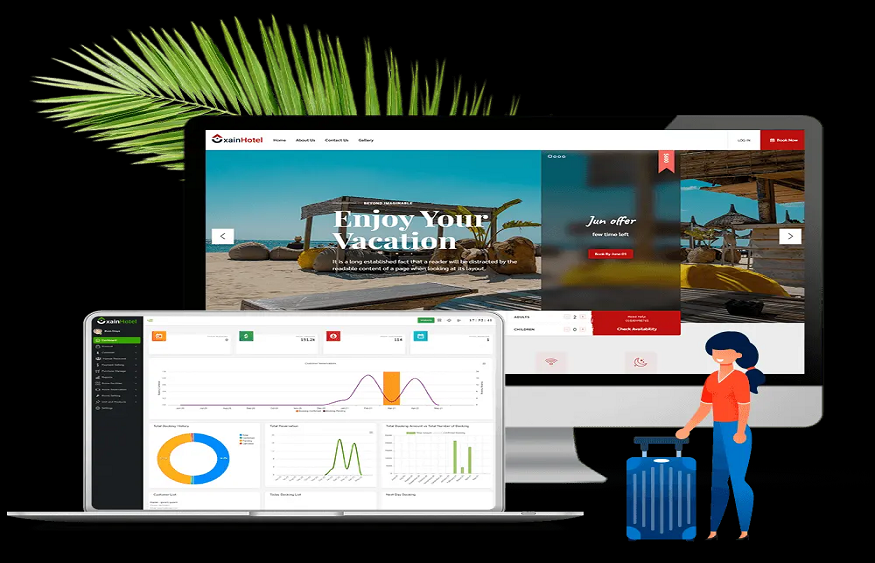In the fast-paced world of construction, the efficient utilization of equipment is crucial for project success. Construction companies invest heavily in expensive machinery, and ensuring their optimal usage is vital to stay competitive in the industry. This is where construction asset management software plays a pivotal role. By providing comprehensive tracking and management capabilities, these software solutions have revolutionized the way construction companies handle their equipment. In this article, we will explore the importance of construction equipment tracking software and its impact on maximizing equipment utilization.
Understanding the Challenges:
Construction projects involve multiple tasks, numerous equipment, and varying site conditions. Without effective asset management, companies often face challenges in tracking, scheduling, and maintaining equipment. Traditional methods, such as manual record-keeping, paper-based processes, and spreadsheets, are prone to errors and delays, leading to inefficiencies and increased costs. To address these challenges, construction asset management software offers a holistic solution.
Streamlining Equipment Tracking:
One of the primary functions of construction asset management software is tracking equipment. By leveraging advanced technologies such as GPS and RFID, these software solutions enable real-time monitoring of equipment location and usage. Contractors can quickly locate equipment on-site, reducing downtime and optimizing resource allocation. Detailed data on equipment utilization, maintenance schedules, and operator performance can be effortlessly tracked, empowering companies to make data-driven decisions.
Enhancing Maintenance and Repair:
Equipment downtime due to breakdowns or malfunctions can severely impact construction timelines and budgets. Asset management software aids in preventive maintenance by tracking equipment usage and generating maintenance alerts based on predefined criteria. Proactive maintenance reduces the risk of unexpected breakdowns, extends equipment lifespan, and ensures optimal performance. Additionally, the software streamlines repair processes by maintaining a centralized database of maintenance history, spare parts inventory, and service provider information.
Optimizing Resource Allocation:
Construction projects often require multiple teams working simultaneously across different sites. Construction asset management software provides visibility into equipment availability, enabling efficient resource allocation. Contractors can easily identify idle or underutilized equipment and redistribute them to sites with higher demands. This optimization not only maximizes equipment utilization but also reduces the need for additional equipment purchases, resulting in substantial cost savings.
Improving Project Scheduling:
Effective project scheduling relies on accurate information about equipment availability and usage. Construction asset management software offers real-time insights into equipment utilization patterns, allowing contractors to plan projects more efficiently. By identifying equipment requirements in advance, companies can avoid delays caused by equipment unavailability and overlapping schedules. This streamlined approach optimizes project timelines, enhances productivity, and ultimately improves customer satisfaction.
Enhancing Safety and Compliance:
Safety is a paramount concern in the construction industry. Asset management software contributes to safety by ensuring equipment compliance with regulatory standards and industry best practices. The software can track equipment certifications, maintenance records, and operator qualifications, ensuring that only compliant and qualified equipment is used on-site. By minimizing safety risks and promoting adherence to regulations, construction companies can maintain a safe working environment for their employees and avoid costly penalties.
Integration and Scalability:
Construction asset management software seamlessly integrates with other construction management systems, such as project management software, accounting software, and procurement systems. This integration facilitates data sharing and streamlines workflows across various departments. Furthermore, the software is scalable and can accommodate the growth and changing needs of construction companies. As projects expand, additional equipment can be easily incorporated into the system, ensuring continued efficient equipment utilization.
Cost Optimization and Financial Management
Effective cost management is a critical aspect of any construction project. Construction asset management software plays a vital role in optimizing costs and improving financial management. By accurately tracking equipment usage, contractors can identify areas of inefficiency and take corrective measures. The software provides valuable insights into equipment idle time, over utilization, and maintenance costs, allowing companies to make informed decisions regarding equipment rental versus ownership.
Moreover, construction asset management software integrates with accounting systems, enabling seamless financial management. Contractors can easily track equipment-related expenses, generate accurate reports, and analyze cost trends over time. This data empowers companies to identify cost-saving opportunities, negotiate better deals with suppliers, and make informed budgeting decisions. By maximizing equipment utilization and optimizing costs, construction asset management software contributes to improved financial performance and profitability.
Data Analytics and Decision Making
In the digital era, data has become a powerful asset for businesses across industries, and construction is no exception. Construction asset management software collects and stores a vast amount of data related to equipment usage, maintenance, and performance. This data can be leveraged through advanced analytics tools to gain valuable insights and drive informed decision making.
By analyzing equipment utilization patterns, contractors can identify areas where equipment is being underutilized or where additional equipment is required. These insights enable companies to allocate resources effectively, preventing unnecessary equipment purchases or rentals. Data analytics also helps in predicting maintenance needs, optimizing preventive maintenance schedules, and reducing equipment downtime.
Conclusion:
Asset management software plays a pivotal role in the construction industry by maximizing equipment utilization. By implementing a comprehensive solution like Foundation Software, construction companies can optimize their equipment usage, reduce downtime, and enhance overall project efficiency.
With Foundation Software’s asset management software, you can gain real-time visibility into your equipment inventory, track maintenance schedules, and ensure timely repairs. This proactive approach helps minimize equipment breakdowns, improve productivity, and ultimately boost your bottom line.



